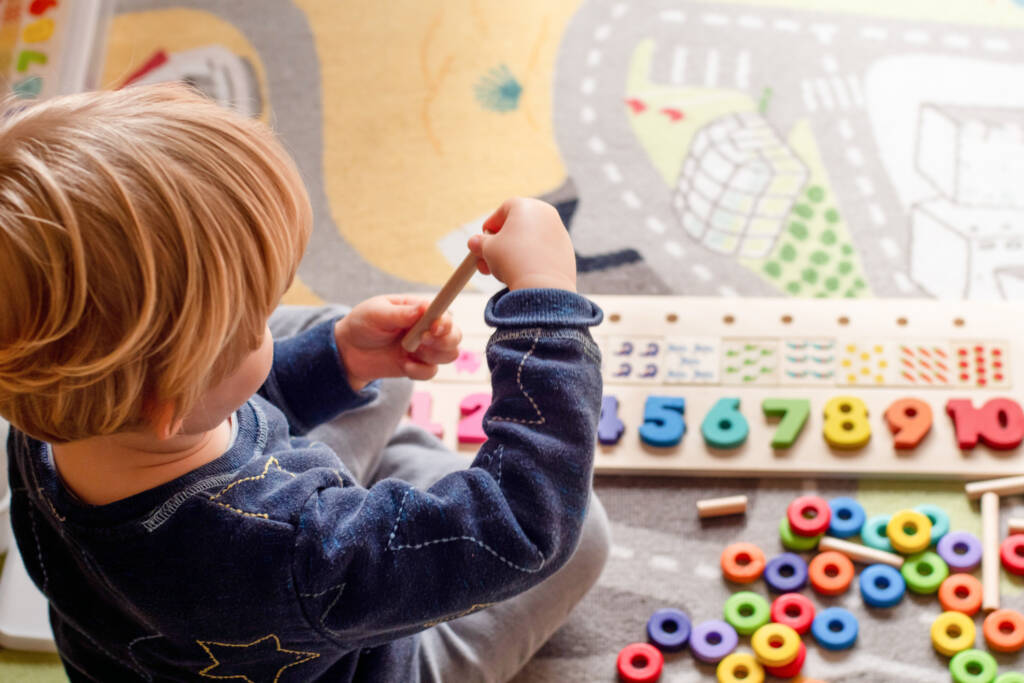
Early Childhood Education 1a

Early Childhood Education 1a: Introduction
Are you curious to see what it takes to educate and nurture early learners? Use your curiosity to explore the fundamentals of childcare, like nutrition and safety, but also the complex relationships caregivers have with parents and their children. Examine the various life stages of child development and the best educational practices to enrich their minds while thinking about a possible future as a childcare provider!
During this course, you will learn career-related skills and earn a badge for this accomplishment. A badge is a digital certification of your career-related learning that you can share on social media and higher education platforms, or with colleges, potential employers, peers, and colleagues. Select this link to learn more about badges.
Major Topics and Concepts
Unit 1: Childcare Roles and Obligations
Explain why early childhood education matters.
Describe different types of families and parenting arrangements.
Describe the legal responsibilities of parenthood.
Discuss the moral or ethical responsibilities of parenthood.
Unit 2: A Clean, Safe, and Healthy Childcare Environment
Demonstrate how to sanitize and disinfect the childcare environment.
Demonstrate proper hand-washing techniques and practices.
Describe safe infant sleep habits.
Describe appropriate security for the childcare home or center.
Unit 3: Food and Nutrition
Describe and explain the USDA and state requirements for meals in a childcare facility.
Explain what is required for participation in the Child and Adult Food Care Program.
Explain how to plan meals and menus for children.
Describe positive mealtime strategies.
Unit 4: Rules and Regulations
Describe the types of childcare facilities.
Explain how childcare facilities are regulated.
Describe the rules that apply to childcare facilities.
Describe the signs and symptoms of child abuse.
Explain how to speak to a child disclosing abuse.
Unit 5: Pregnancy and Childbirth
Describe the signs and stages of pregnancy
Explain the characteristics of each trimester of pregnancy
Discuss best practices for a healthy pregnancy and how prenatal medical care commonly proceeds
Analyze the stages of birth from the onset of contractions to delivery of the placenta
Consider the benefits of breastfeeding
Unit 6: Early Childhood Development
Define and discuss physical, cognitive, language, and social development.
Describe the typical stages of development from infancy through the school years.
Describe how to recognize typical developmental milestones.
Explain when to talk to parents about possible developmental delays.
Unit 7: Special Needs and Inclusivity
Review the history of and landmark turning points in special education
Discuss how disabilities like Down syndrome and cleft palate affect infants’ needs
Describe how toddlers cope with disabilities like autism or muscular dystrophy
Explain the way inclusive classrooms function for preschool and school-aged children
Unit 8: Spotlight on Administration and Setting Up Your Childcare Program
Understand the daily life and responsibilities of an early childhood entrepreneur
Decide on a legal business structure that meets your needs
Plan for business finances, including budgets, expenses, and taxes
Discuss how marketing, advertising, and sales generate income for a business
Discern growth strategies to increase business revenue
Competencies
Business in Childcare
Students will demonstrate an understanding of business in childcare by analyzing the responsibilities, explaining the legal requirements and explaining the business plans to generate income as a childcare business owner.
Childcare Roles and Responsibilities
Students will demonstrate an understanding of childcare roles and responsibilities by describing different types of families, describing responsibilities of parenthood and explaining impacts on the child care environment.
Childhood Nutrition
Students will demonstrate an understanding of childhood nutrition by explaining state and national requirements for meals in a childcare setting, creating menu plans and describing positive mealtime strategies for children.
Dynamics of Pregnancy and Childbirth
Students will demonstrate an understanding of the dynamics of pregnancy and childbirth by describing the signs and stages of pregnancy, describing healthy pregnancy and childbirth practices and analyzing the stages of childbirth.
Healthy Childcare Environments
Students will demonstrate an understanding of a healthy childcare environment by explaining clean hygiene practices and describing safety measures in a childcare environment.
Inclusive Childcare Environments
Students will demonstrate an understanding of inclusive childhood environments by summarizing the history and importance of special education, evaluating how disabilities affect the child’s needs and describing an inclusive classroom setting.
Laws and Regulations of Childcare Facilities
Students will demonstrate an understanding of the laws and regulation of childcare facilities by describing the different types of childcare facilities, explaining how childcare facility rules are regulated and explaining the signs of child abuse.
The Developing Child
Students will demonstrate an understanding of the developing child by describing the different types of development in the child, explaining the stages of development from baby to childhood, formulate strategies to discuss developmental delays with parents.

